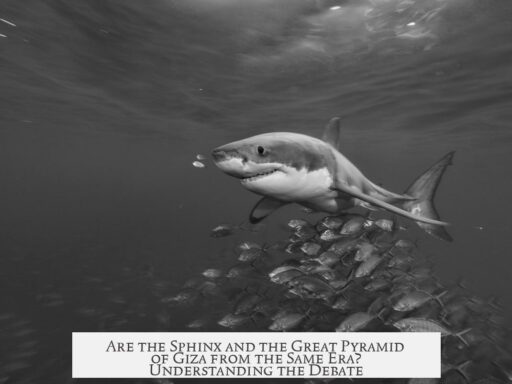Guns, Germs, and Steel by Jared Diamond has fallen out of favor due to several critical issues that affect its originality, accuracy, and relevance. Initially celebrated in 1997 for explaining European imperial dominance through environmental factors, the book lacks originality. It covers much of the same ground as Alfred Crosby’s 1986 work, Ecological Imperialism, without citing it. This omission raises questions about Diamond’s scholarly rigor.
Diamond’s background is another point of concern. He is neither an academic historian nor an archaeologist. His historical interpretations rely heavily on secondary sources rather than original research. This limitation means his historical analysis can contain inaccuracies or outdated ideas.
A significant example is Diamond’s adherence to the “Clovis First” theory about the peopling of the Americas. This theory claims the Clovis people were the first in the Americas and caused the rapid extinction of megafauna. Since 1997, extensive archaeological and genetic evidence contradicts this view, showing humans arrived earlier than Clovis. Nevertheless, Diamond defended this theory as late as 2017, which critics see as anti-scientific stubbornness.
Furthermore, Diamond appears to ignore key advances in pre-Columbian archaeology and population genetics. His later works closely resemble sections from Guns, Germs, and Steel, indicating little update to reflect new research. This behavior suggests a reluctance to integrate fresh evidence, weakening his credibility.
| Issue | Impact |
|---|---|
| Lack of originality and citation | Undermines novelty and scholarly trust |
| Lack of historian/archaeologist expertise | Leads to inaccuracies and reliance on secondary sources |
| Support for outdated Clovis First theory | Ignores modern evidence, reducing scientific credibility |
| Ignoring recent archaeological and genetic discoveries | Shows stagnation and reluctance to update views |
These factors contribute to the diminishing favor of Guns, Germs, and Steel. While still influential, many scholars now approach it cautiously, recognizing its limitations.
- The book revisits previously covered historical themes without proper citation.
- Diamond lacks formal training in history or archaeology.
- He maintains discredited theories despite contrary evidence.
- Recent scientific advances are largely excluded from his narrative.
Why has Guns, Germs and Steel fallen out of favor?

In a nutshell, Guns, Germs and Steel has lost its shine because it recycles old ideas without acknowledgment, sticks to outdated theories, and largely ignores new scientific evidence. This combination, especially for a book once championed for its sweeping explanation of history, turns heads today and raises eyebrows among scholars and readers alike.
Remember when Guns, Germs and Steel burst onto the scene in 1997? It was considered a grand, ambitious work aiming to explain why certain civilizations dominated the world. Yet, beneath the surface, much of Jared Diamond’s narrative wasn’t all that original. In fact, it echoes themes from Alfred Crosby’s 1986 book Ecological Imperialism. Surprisingly, Diamond never cites Crosby at all. This oversight matters because academic works thrive on dialogue with predecessors, building on prior knowledge rather than sidestepping it. When a book misses that, it signals a lack of scholarly rigor.
One might ask: how much does that really matter? Quite a bit! Crediting sources isn’t just a formality; it’s an essential part of intellectual honesty and respect. Without this foundation, readers begin to question how much fresh insight the book offers. For those who love history’s big picture, originality is key, and the absence of it dulls the book’s impact.
Not quite a historian’s story
Another sticking point is Diamond’s background. He’s a scientist—a biologist and geographer, not a trained historian or archaeologist. This becomes painfully clear when you dive into his historical claims. In crafting his grand narrative, Diamond leans heavily on the works of historians and archaeologists. But when the sources fall short, so does his history.
Imagine trying to build a house on shaky foundations. That’s what happens when a writer ventures deeply into history without the proper tools or training. His reliance on secondary sources sometimes means inaccuracies slip through or complex historical debates get oversimplified. For readers seeking nuanced understanding, this is a letdown.
Stuck in the past—literally
The saga gets trickier with Diamond’s stubborn commitment to the “Clovis First” theory. What’s that? It’s the idea that the Clovis people were the earliest inhabitants of the Americas, arriving around 13,000 years ago, and that they quickly wiped out large prehistoric animals there.
This theory was common when Diamond wrote his book. But since then, decades of archaeological digs and genetic studies have cast serious doubt on it. Evidence peeking further back in time shows people were in the Americas before the Clovis culture. Diamond, surprisingly, sticks with his guns, dismissing newer findings as unproven. This kind of resistance to updating one’s views in light of fresh evidence doesn’t sit well with many scientists.
Locked in time: ignoring new evidence

Fast forward to 2017. Diamond gives an interview that mirrors large chunks of his 1997 book almost word for word. Talk about déjà vu! This rehashing, instead of integrating two decades of exciting discoveries in pre-Columbian archaeology and population genetics, feels lazy at best.
When you’re a reputed authority, continuing to act as if no new data has come along is more than just outdated—it’s almost a pretender’s game. Audiences and scholars alike want to see engagement with fresh knowledge, especially in a fast-moving field where theories evolve rapidly.
What does this all mean for you, the reader?
Well, it means if you’re picking up Guns, Germs and Steel today expecting a groundbreaking, up-to-date worldview, you might want to pause. The book remains valuable as a broad introduction to certain historical themes—like how geography and ecology shape civilizations—but with the caveats mentioned.
For a richer and more accurate take, consider supplementing your reading with newer research and voices from historians and archaeologists. There’s a wealth of recent studies showing a much more complex and dynamic human past than Diamond’s book permits.
Looking for alternatives? Alfred Crosby’s Ecological Imperialism offers a pioneering ecological view of colonialism. Or dive into the latest findings on the peopling of the Americas, which reveal a story messier and more fascinating than the old Clovis-first narrative.
So, is Guns, Germs and Steel totally passé?
Not entirely! Its accessible storytelling and big-picture style still appeal. But anyone relying solely on it risks developing an incomplete, and occasionally inaccurate, picture of history. The book now serves more as a snapshot of late 20th-century thinking than a definitive account.
Diamond’s tale reminds us that intellectual humility and openness to new evidence are key to good scholarship. History, much like life, is always more complicated than our first explanations suggest.
Final thoughts
Why has Guns, Germs and Steel fallen out of favor? It’s a mix of playing fast and loose with sources, clinging stubbornly to outdated ideas, and ignoring exciting new data that scholars now use to paint a fuller picture of humanity’s past. The good news? This decline opens the door for lively discussions, fresh perspectives, and a richer understanding ahead.
Next time you pick up a history book, ask yourself: Does this writer embrace new evidence, or do they cling to old tales? The answers lead you to books that matter—and more importantly—to truths that last.




